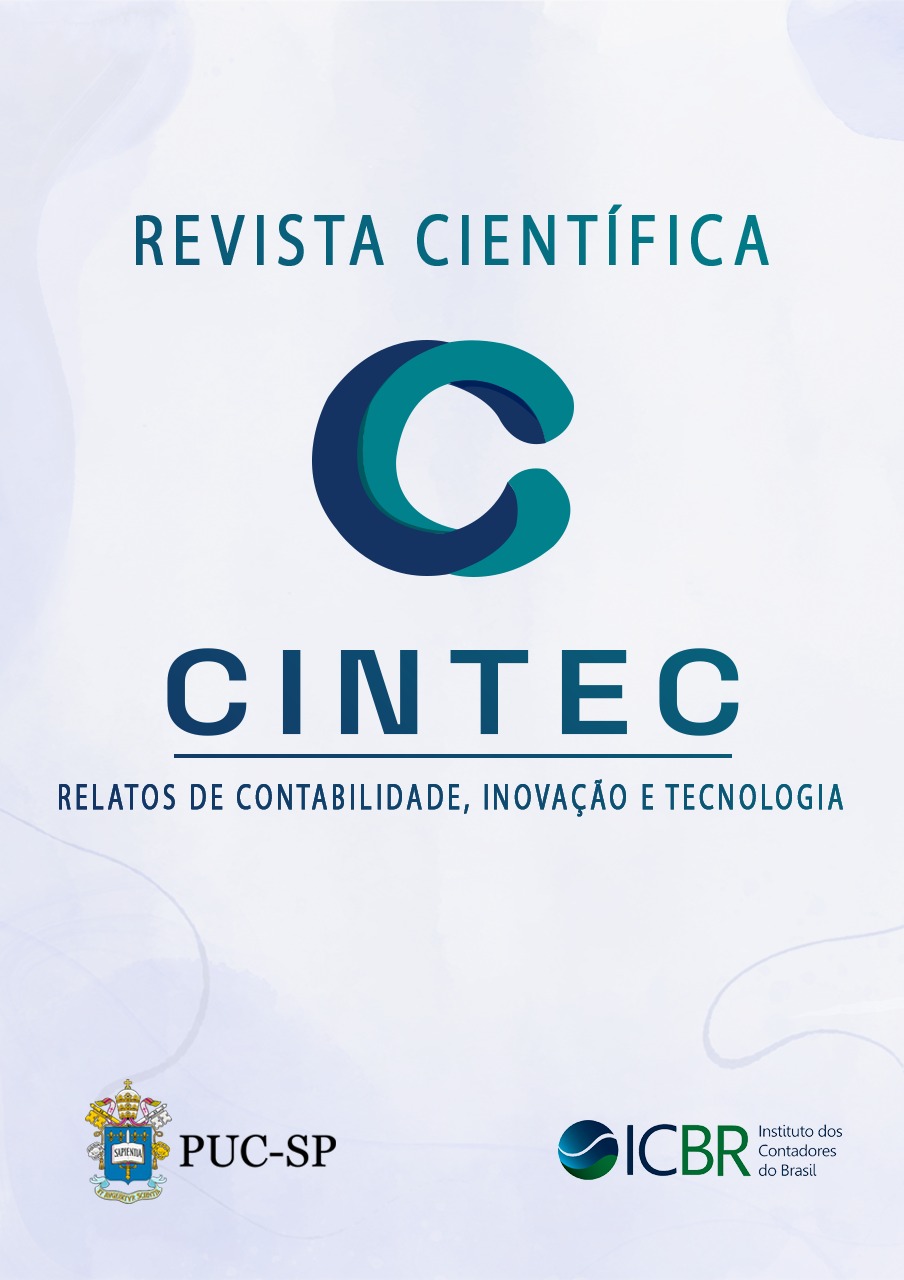Accounting and its relationship with Shadow It
DOI:
https://doi.org/10.23925/cintec.v2i2.67795Keywords:
accounting, shadow IT , shadow systemsAbstract
Problem Diagnosis and/or Opportunity: the use of systems outside the control of the IT department, known as Shadow IT, can provide quick solutions for urgent demands but also presents significant risks to organizations. In the accounting context, where highly sensitive and confidential information is handled, the use of Shadow IT can compromise data security. This study aimed to investigate the relationship between accounting and the use of Shadow IT in organizations, seeking to identify accountants' perceptions of this practice, the risks involved, and their willingness to utilize it.
Methodology/Approach: the research adopted a descriptive Survey approach, using closed-ended questionnaires to capture accountants' perceptions, followed by an open-ended questionnaire directed at managers in the field. This methodology allowed for an in-depth analysis of participants' perceptions and experiences regarding the use of Shadow IT in the accounting context.
Results/Applications: the results indicated that while Shadow IT is utilized by accounting professionals, its use is often justified as a response to urgent business needs. This reveals a tension between operational efficiency and organizational security, highlighting the challenges companies face in balancing these demands.
Contributions: the study contributed by highlighting the need for a balance between operational agility and compliance with IT policies. It was suggested that organizations review and adapt their IT policies to better accommodate the emerging needs of accounting professionals. For future research, it is recommended to explore risk mitigation strategies associated with Shadow IT and evaluate the effectiveness of these strategies in different organizational contexts.
References
Evangelista, V., Lopes, M., & Xavier, F. (2022). Shadow IT: Que controles a gestão da tecnologia pode estipular sem anacronismos. https://periodicos.ufpe.br/revistas/index.php/RMP/article/view/252767/41540
Gil, A. C. (2022). Como elaborar projetos de pesquisa. Barueri, SP: Atlas.
Godoy, A. S. (1995). Uma revisão histórica dos principais autores e obras que refletem esta metodologia de pesquisa em Ciências Sociais. https://www.scielo.br/j/rae/a/wf9CgwXVjpLFVgpwNkCgnnC/?format=pdf&lang=pt
Haag, S., & Eckhardt, A. (2017). Shadow IT. Business & Information Systems Engineering, 59, 473. https://doi.org/10.1007/s12599-017-0497-x
Houghton, L., & Kerr, D. V. (2006). A study into the creation of feral information systems as a response to an ERP implementation within the supply chain of a large government-owned corporation. International Journal of Internet and Enterprise Management, 4(2), 135-147. https://www.researchgate.net/publication/220438778_A_study_into_the_creation_of_feral_information_systems_as_a_response_to_an_ERP_implementation_within_the_supply_chain_of_a_large_government-owned_corporation.
Lunardi, G. L., Dolci, D. B., & Dolci, P. C. (2017). Adoção de Tecnologia da Informação e sua Relação com a Gestão de Negócios em Micro e Pequenas Empresas (MPEs). Revista de Administração da UFSM, 10(5), 929-948.
Monteiro Junior, A. G. (2018). As práticas de shadow IT nas empresas: A visão de profissionais contadores [Dissertação de mestrado, PUCSP]. https://tede.pucsp.br/bitstream/handle/21967/2/Antonio%20Gaspar%20Monteiro%20Junior.pdf.
Puhakainen, P., & Siponen, M. (2010). Improving employees' compliance through information systems security training: An action research study. MIS Quarterly, 34(4), 757-778.
Silic, M., & Back, A. (2014). Shadow IT–A view from behind the curtain. Computers & Security, 45, 274-283. <https://www.researchgate.net/publication/263284725_Shadow_IT_-_A_view_from_behind_the_curtain>.
Downloads
Published
How to Cite
Issue
Section
License
Copyright (c) 2024 Revista Científica Cintec

This work is licensed under a Creative Commons Attribution 4.0 International License.
1 - Os textos publicados na revista são de inteira responsabilidade de seus autores.
2 - É permitida a reprodução, desde que citada a fonte e o autor.
Após o artigo aprovado, o autor principral deverá enviar declaração, conforme o modelo:


